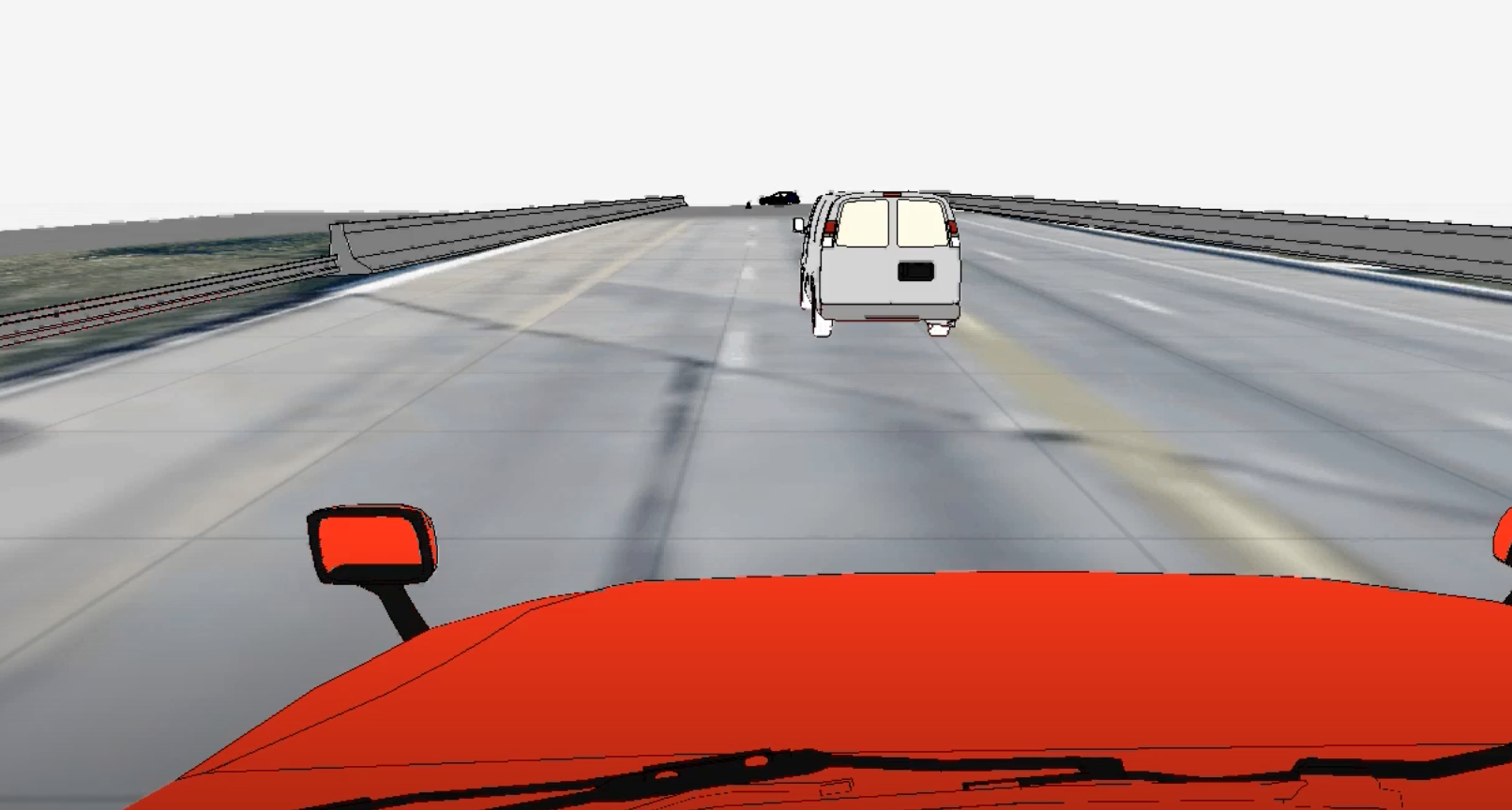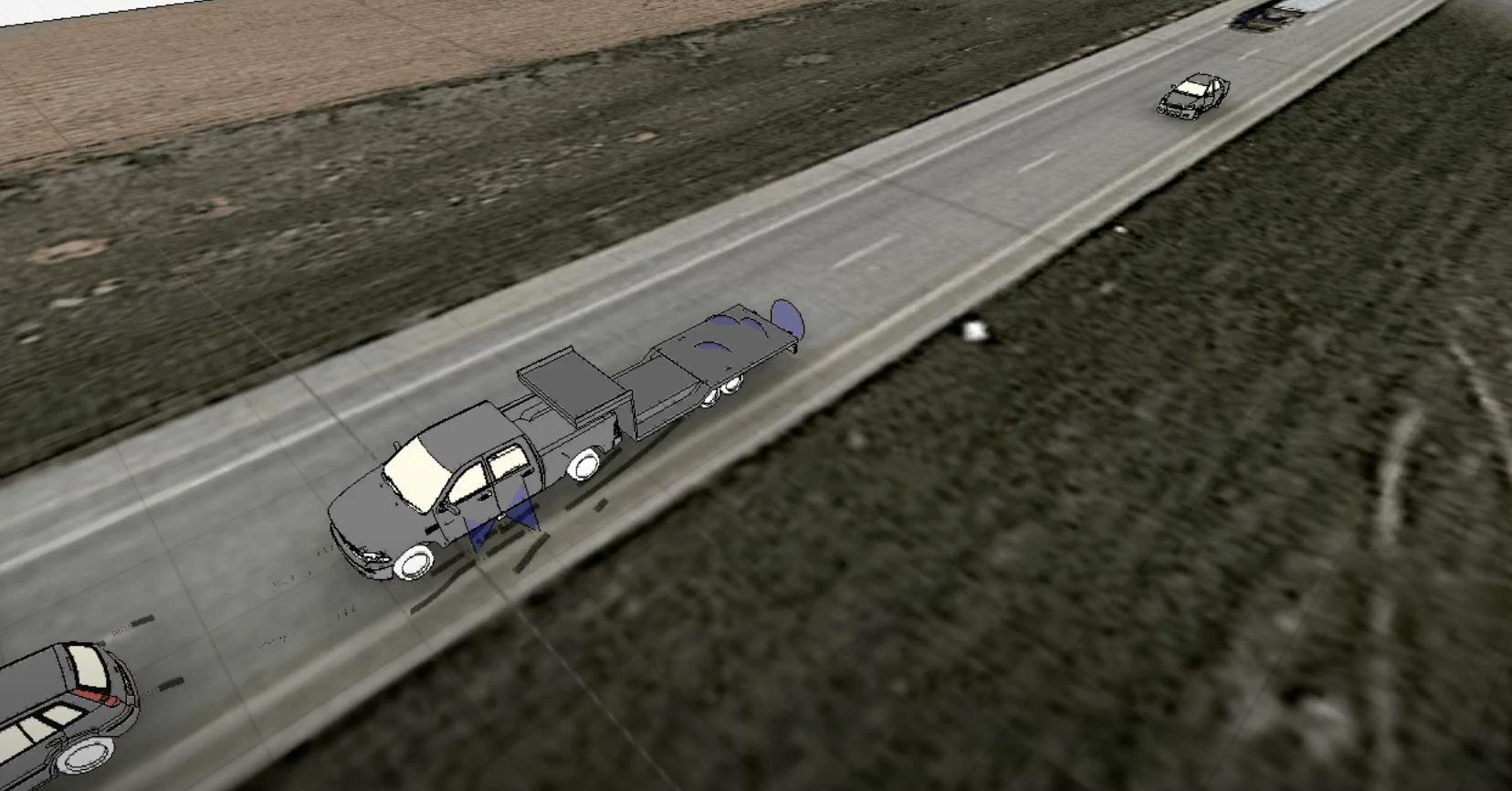Motor Vehicle Crash
Litigated motor vehicle crashes, and the injuries that result from them, range widely in complexity. FR+A provides a comprehensive approach to such investigations, including detailed reconstruction of crash events and severity, illustrated with state-of-the-art computer-aided simulation and animation (see more about this below). This information is used to inform a biomechanical analysis of occupant movement, intra and extra-vehicular impacts, and associated loads.
The unique aspect of an FR+A crash analysis is the use of epidemiologic data and methods to evaluate important disputed issues in a case. Such analysis ranges from the relatively simple, such as determining the frequency of spinal disk injury in a low speed crash for an injury causation analysis, to more complex analyses, including the likelihood that use of a seat belt or an airbag deployment would have altered a specific injury outcome, or the evaluation of pre-crash occupant position (i.e. driver vs. passenger) based on comparative injury pattern probabilities, among others.
Crash reconstruction is an important first step in an injury causation analysis. At FR+A we use a range of computer aided techniques to not only reconstruct the events of a crash, but also to illustrate how, in some cases, opposing experts have understated crash forces, or misstated crash events, as a basis for faulty claims regarding injury risk and causation. “Simulation” is the process of using applied physics to match the known circumstances and evidence of a crash in a computerized environment. The program uses information such as tire marks, vehicle crush, and post-crash vehicle movement and final rest positions, with the goal to match the evidence as closely as possible in the simulation, which then allows the simulator to fill in the gaps of the missing information, such as impact speed, delta V (speed change), likely driver actions, etc. The results of the simulations can then be animated, to help fact-finders easily understand the evidence. Below are some examples of how FR+A use simulation and animation to investigate the events of a crash, and illustrate when and how opposing experts get it wrong.
Moderate-Speed Intersection Crash Reconstruction #1
This plaintiff sustained a surgical cervical disk injury after the defendant ran a stop sign and struck her vehicle in an intersection. The FR+A reconstruction of the crash was based on the scene photos of the post-crash position of the vehicles, which were parallel to each other, indicating substantial post-impact rotation. The simulation and animation, which is below, precisely reproduced the post-collision rotation and final rest position of the vehicles as seen in the photos.
The defense retained an expert who reconstructed the crash as occurring at a substantially lower speed. The claimed lower collision speed was simulated and animated by FR+A, and failed to produce the post-collision movement and final rest position depicted in the photographic scene evidence. The animation provided evidence that the defendant’s reconstruction testimony was self-evidently inaccurate.
Moderate Speed Intersection Crash Reconstruction #2
The plaintiffs were the driver and front seat passenger in a sedan that was struck in the driver’s side by the defendant, who ran through a stop sign. The photos of the scene evidence and vehicle damage demonstrated that the car rotated off of the roadway and struck a light pole, causing the front seat passenger to strike her head on the door frame and sustain a traumatic brain injury. The FR+A reconstruction was animated to demonstrate that it accurately reproduced the scene and vehicle evidence.
The defendant’s biomechanical expert claimed that a reconstruction of the crash demonstrated it could not have caused either of the plaintiffs’ injuries. The claimed impact speeds were simulated and resulted in the animation below, in which it was demonstrated that the defense expert’s opinion regarding the collision severity was impossible, given the scene and damage evidence, as the impact at the lower speed did not result in the vehicle leaving the roadway or striking the light pole.
Complex roadway pedestrian crash
The crash that is animated below resulted in the death the driver of a passenger vehicle that spun out on an icy highway at night, and came to a stop on the roadway. The driver exited the vehicle and attempted to get to the shoulder, but another vehicle, traveling in the same direction, struck his vehicle, which in turn struck him and threw him into left lane of travel. A semi tractor-trailer, traveling 55 mph in the icy conditions, ran the man over, killing him instantly, an event that was captured on the video and audio feed from the semi. The purpose of the FR+A analysis was 2-fold, 1) to determine whether the man was likely to have been killed by the first impact, and 2) to determine if the semi driver could have avoided the crash if he had been driving at the speed indicated by the icy conditions, which was determined to be 35 mph.
The video below shows an aerial view of the crash sequence, reconstructed from the video evidence:
The animation of the semi driver’s view below is a precise duplication of the cab-forward video recording of the crash. Analysis of national crash injury data indicated a low probability (<7%) that the decedent would have been killed by the initial impact, which threw him into the path of the semi.
The video below demonstrates that, had the semi driver been traveling at 35 mph and if he had braked at the same point in time, that the semi could have brought to a stop prior to striking and killing the man.
Parking lot low speed pedestrian crash
In the video below is a reconstruction of pedestrian crash, in which the off-tracking of a trailer, towed by a pick up, was not recognized by the driver as he slowly drove past a vehicle parked on the side of the road, where pedestrian traffic was occurring. The rapidly closing distance between the trailer and the parked car initially trapped the women between the trailer and car, and then rolled her body between the 2 vehicles resulting in multiple fractures of her pelvis and lower extremities, and projecting her body in front of the car.
2 complex high speed multi-vehicle crashes
In the animated crash sequences below, the question of interest was how each crash affected the plaintiff's vehicle. In the first video, below, the passenger car first strike a stopped heavy truck towing a trailer, which has stopped on the roadway due to heavy fog. After striking the trailer, the car was subsequently struck from the rear by 2 other vehicles. Both occupants of the car were seriously injured.
In the 2nd animation below, the sequence of the crash was difficult to understand from the scene evidence. The white vehicle was struck from the rear as it was stopped for traffic, and was subsequently struck by the red vehicle, resulting in serious spine and head injuries. It was initially unclear as to how the vehicle crossed the roadway and came to rest on the left side of the roadway. The simulation revealed that the right rear of the white vehicle impacted the rear of the stopped black vehicle in front of it, which produced the rotation that contributed to the 3rd collision with the red vehicle. The animation closely matched the scene evidence indicating the final rest positions of the vehicles.










